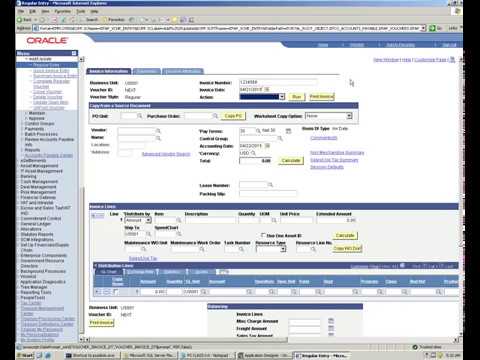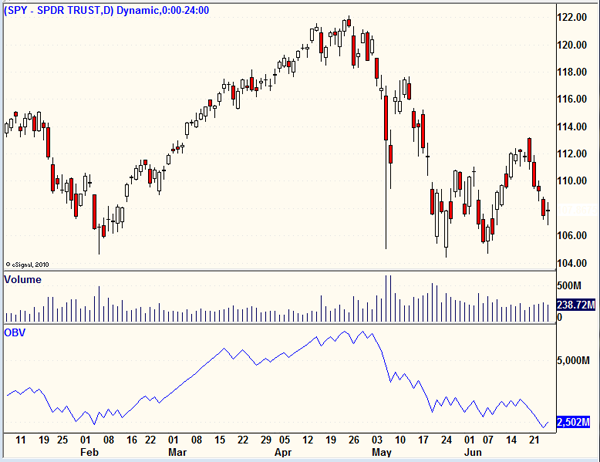Contents:


Probability sampling can still exist within a filtered group , as long as every representative of this subgroup has an equal chance of being selected. There are many different types of sampling and each of these methods can be effectively applied in different situations, for different market research needs. Cluster sampling is appropriate when you are unable to sample from the entire population.
Outcomes from integrating anti-cervical cancer teachings into the … – BMC Public Health
Outcomes from integrating anti-cervical cancer teachings into the ….
Posted: Fri, 14 Oct 2022 07:00:00 GMT [source]
In this article, we will answer some of the most purposive random sampling questions that market researchers and business owners have about sampling. Compared to simple random samples, you’ll need a larger sample size for a multistage sample to achieve the same statistical inference properties. Like in single-stage sampling, you start by defining your target population. But in multistage sampling, you don’t need a sampling frame that lists every member of the population. That’s why this method is useful for collecting data from large, dispersed populations.
Purposive Sampling Techniques
In cluster sampling, the population is divided into clusters, which are usually based on geography (e.g., cities or states) or organization (e.g., schools or universities). In single-stage cluster sampling, you randomly select some of the clusters for your sample and collect data from everyone within those clusters in one stage. These problems occur in the academic literature, but they may be more common in non-academic research.

In an observational study, there is no interference or manipulation of the research subjects, as well as no control or treatment groups. It is important that the sampling frame is as complete as possible, so that your sample accurately reflects your population. If the test fails to include parts of the construct, or irrelevant parts are included, the validity of the instrument is threatened, which brings your results into question. Content validity shows you how accurately a test or other measurement method taps into the various aspects of the specific construct you are researching. Construct validity is often considered the overarching type of measurement validity.
Examples of Purposive Sampling
Within-subjects designs have many potential threats to internal validity, but they are also very statistically powerful. With random error, multiple measurements will tend to cluster around the true value. When you’re collecting data from a large sample, the errors in different directions will cancel each other out. In general, correlational research is high in external validity while experimental research is high in internal validity. You can organize the questions logically, with a clear progression from simple to complex, or randomly between respondents.
For this reason, purposive sampling works best when you have a lot of background information about your research topic. Demographics, geography, professional profile, and more might all be actively considered. These panels can be used for valuable insights, including basic market research, product development, brand tracking, and consumer behavior. By using a panel to look at a specific group of people, businesses can draw crucial conclusions about their broader target audience. Sampling Bias and How to Avoid It | Types & Examples Sampling bias occurs when some members of a population are systematically more likely to be selected in a sample than others.
As such, a snowball sample is not representative of the target population and is usually a better fit for qualitative research. On the other hand, content validity evaluates how well a test represents all the aspects of a topic. Assessing content validity is more systematic and relies on expert evaluation. Of each question, analyzing whether each one covers the aspects that the test was designed to cover.
Because it’s all the students from the randomly selected classes, not x people from each class. The samples formed are highly suitable for the context of the research, survey, or experiment. So here, we have an example of critical case purposive sampling, where a country or a particular city is selected for better and more accurate research. Since religion is a sensitive topic, this type of sampling is ideal for a more thorough study. Sampling means selecting the group that you will actually collect data from in your research.
Methods are the specific tools and procedures you use to collect and analyze data . In statistics, sampling allows you to test a hypothesis about the characteristics of a population. Quantitative variables are any variables where the data represent amounts (e.g. height, weight, or age). If you want to analyze a large amount of readily-available data, use secondary data. If you want data specific to your purposes with control over how it is generated, collect primary data.
So you select people from Malaysia, where nearly a fifth of the population practices the religion. The reason is that while China has the highest Buddhist population at 18.2%, it’s too large compared to Malaysia and therefore isn’t easy to sample accurately. So, this is a case where the company doesn’t know much about a subject but creates a sample of people who do. We know the definition of purposive sampling and different ways of carrying out purposive sampling. These attributes can be of the people, businesses, events, or raw data in the sample, depending on the researcher’s or survey taker’s requirements.
Which sampling method should you use?
This method is the most straightforward of all the probability sampling methods, since it only involves a single random selection and requires little advance knowledge about the population. Because it uses randomization, any research performed on this sample should have high internal and external validity, and be at a lower risk for research biases like sampling bias and selection bias. The purpose of purposive sampling is to select participants based on specific criteria relevant to the research question or objectives. Every type of sampling method will have both pros and cons that come with it.
- Causation means that changes in one variable brings about changes in the other; there is a cause-and-effect relationship between variables.
- With this method, every member of the sample has a known or equal chance of being placed in a control group or an experimental group.
- Purposive sampling is a type of sampling in which researchers will directly select a subpopulation that is supposed to be representative of the population as a whole.
- Participant answers can guide future research questions and help you develop a more robust knowledge base for future research.
Probabilistic of the sampling and sampling of samples by chance does rest solely on the random methods. Factors such as the random visits or presentation of the potential participants at clinics or sites could be sufficiently random in nature and should be used for the sake of efficiency and feasibility. Nevertheless, this approach has to be taken only after careful thoughts. Representativeness of the study samples have to be checked at the end or during reporting by comparing it to the published larger studies or register of some kind in/from the local population. Secondly, we need to check for availability of a sampling frame , if not, could we make a list of our own .
This means that they only collect data from participants who can be identified and approached with as little effort as possible. Purposive sampling is a non-probability sampling technique used in research to select individuals or groups of individuals that meet specific criteria relevant to the research question or objective. | Types & Examples Non-probability sampling involves selecting a sample using non-random criteria like availability, geographical proximity, or expertise. In purposive sampling, you set out to identify members of the population who are likely to possess certain characteristics or experiences .
For example, using a sample of people in the paid labor force to analyze the effect of education on earnings is to use a nonprobability sample of persons who could be in the paid labor force. Because the education people obtain could determine their likelihood of being in the paid labor force, the sample in the paid labor force is a nonprobability sample for the question at issue. Quota Sampling – This is similar to stratified random sampling, in which the researcher identifies subsets of the population of interest and then sets a target number for each category in the sample. Next, the researcher samples from the population of interest nonrandomly until the quotas are filled.
Since you may not know the standard deviation of the population you are studying, you should choose a number high enough to account for a variety of possibilities (such as 0.5). In the second stage, you list all schools within those school districts. Multistage sampling is often considered an extended version of cluster sampling. The area we live in, language, shopping, and eating habits are all data points. We can go on, but you get the point – it’s practically impossible to find relevant information from data unless you sample it correctly.
Adaptation and study protocol of the evidence-based Make Better … – BMC Public Health
Adaptation and study protocol of the evidence-based Make Better ….
Posted: Tue, 08 Nov 2022 08:00:00 GMT [source]
You can also do so manually, by flipping a coin or rolling a dice to randomly assign participants to groups. Random assignment is used in experiments with a between-groups or independent measures design. In this research design, there’s usually a control group and one or more experimental groups. Depending on your study topic, there are various other methods of controlling variables. The term “explanatory variable” is sometimes preferred over “independent variable” because, in real world contexts, independent variables are often influenced by other variables. Systematic errors are much more problematic because they can skew your data away from the true value.
What makes a good sample?
In terms of similarities, purposive and quota sampling are both non-probability methods and depend on the researcher’s discretion and knowledge to some degree. Purposive sampling would seek out people that have relevant research attributes. Quota sampling takes purposive sampling one step further by identifying categories that are important to the study and for which there is likely to be some variation.
We form purposive samples of the relevant students for this kind of survey. In other cases, average students are included in the sample, depending on the experiment or research. Critical case purposive sampling chooses one information-rich case to represent the population.
Heterogeneous or maximum variation sampling relies on researcher’s judgment to select participants with diverse characteristics. This is done to ensure the presence of maximum variability within the primary data. TV reporters stopping certain individuals on the street in order to ask their opinions about certain political changes constitutes the most popular example of this sampling method.
Association Between Belief in Medicine and Adherence to … – Cureus
Association Between Belief in Medicine and Adherence to ….
Posted: Tue, 21 Mar 2023 07:00:00 GMT [source]
If done right, purposive sampling helps the researcher filter out irrelevant responses that do not fit into the context of the study. Once you spell out the criteria for the systematic investigation based on specific aims and objectives, you can go ahead to choose units or variables that can provide meaningful responses. One of the most effective ways to conduct market research is sampling. Sampling utilizes data from a small group, such as a simple random sample, and allows marketers to draw conclusions about a much larger target population. Single-stage stratified samplingYou divide the sampling frame up into three strata of different socioeconomic status. Studies intended to use probability sampling sometimes end up using nonprobability samples because of characteristics of the sampling method.
- The researcher can analyze all data points for unique attributes, which leads to better data.
- Stratified Sampling
- Researchers use sampling methods when they want to access a particular subset of people, where all the survey participants are selected to fit a specific profile.
- Although larger samples provide more statistical certainty, they also cost more and require far more work.
- It is often used when the issue you’re studying is new, or the data collection process is challenging in some way.
Random identification numbers and those students are asked to take a survey. Example—A teachers puts students’ names in a hat and chooses without looking to get a sample of students. Based on their choice of majors, we can divide them into 10 groups, then the final sample will represent each of these groups in an equal ratio. It’s the best method to find averages in the data, which is of high value in many experiments. For example, using aStudent Feedback Surveyto collect the students’ inputs about the education system, their choice of subject, the content, and literally anything else.
Clean data are valid, accurate, complete, consistent, unique, and uniform. Explanatory research is a research method used to investigate how or why something occurs when only a small amount of information is available pertaining to that topic. The United Nations, the European Union, and many individual nations use peer review to evaluate grant applications. It is also widely used in medical and health-related fields as a teaching or quality-of-care measure. In inductive research, you start by making observations or gathering data.
